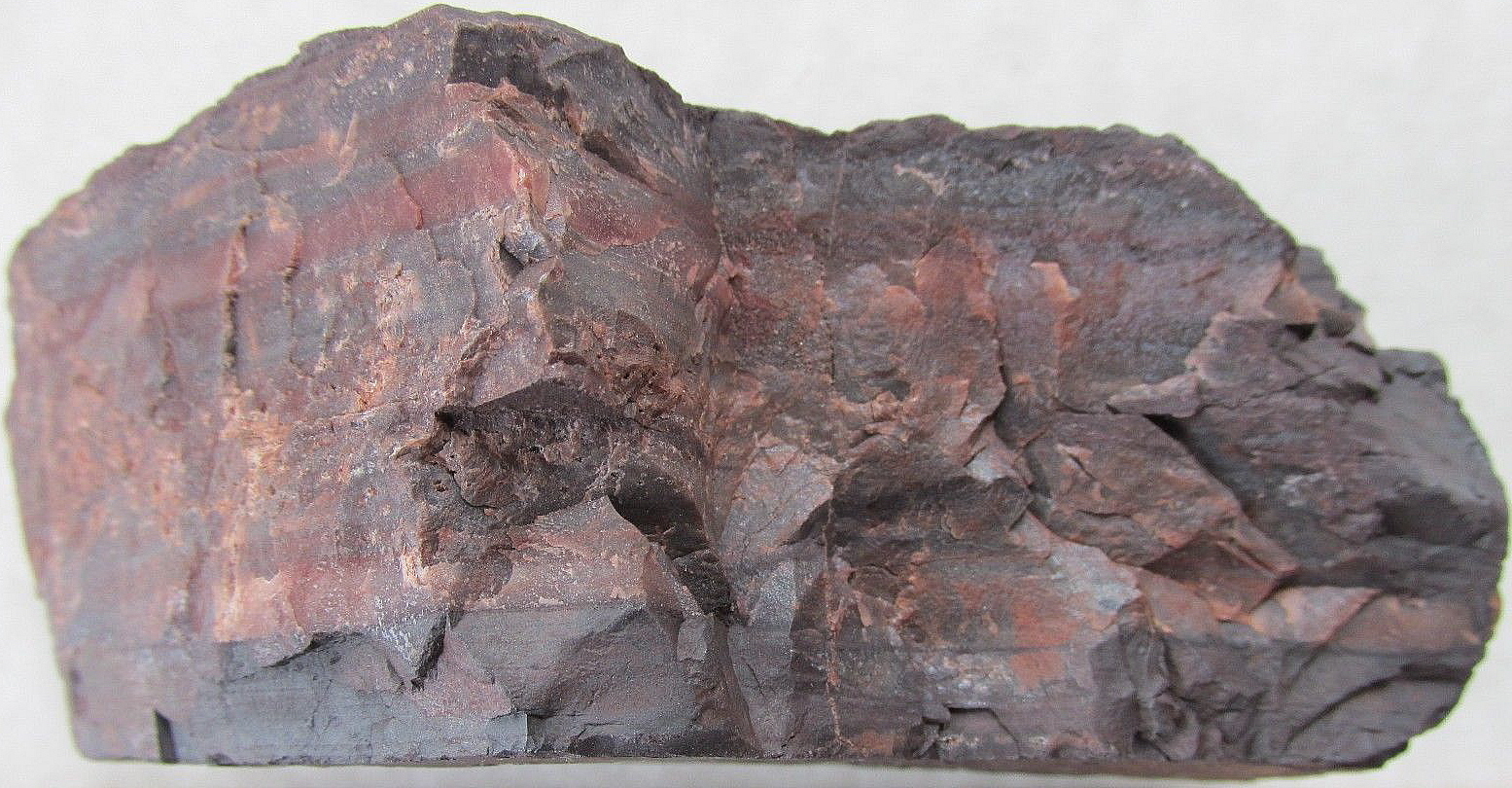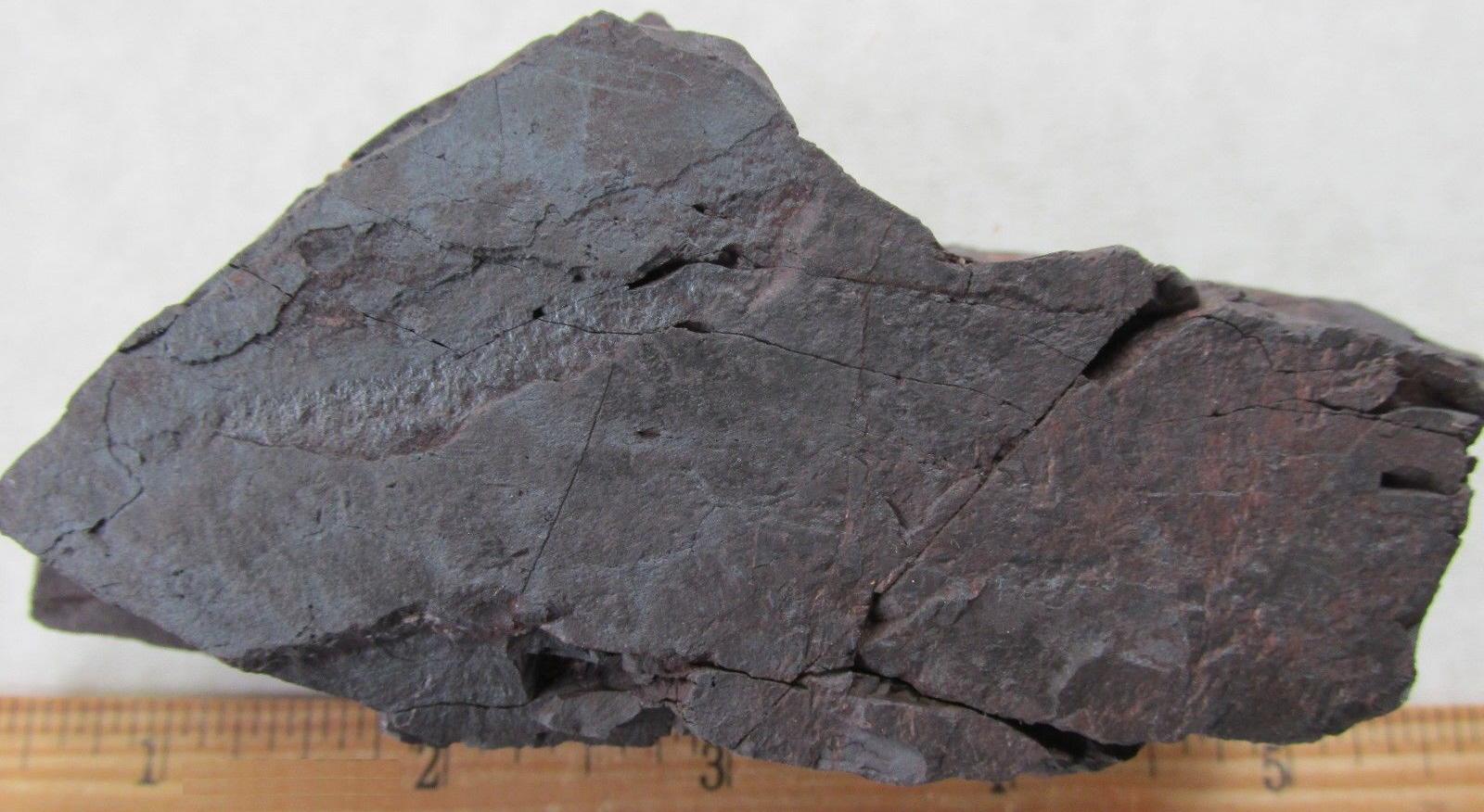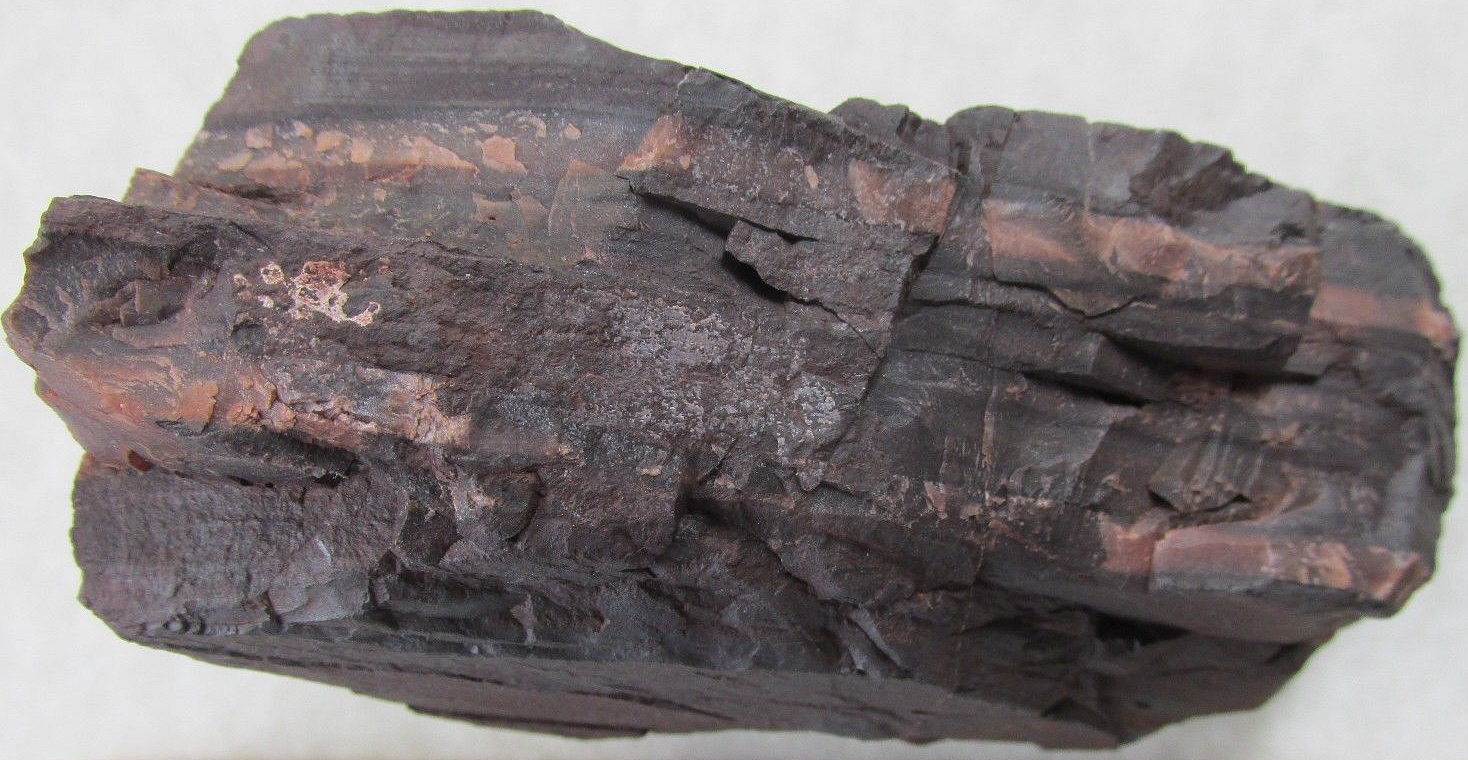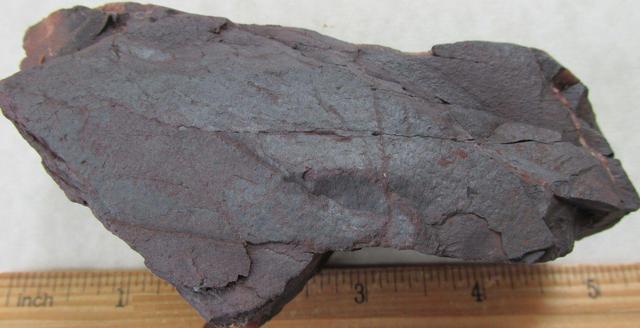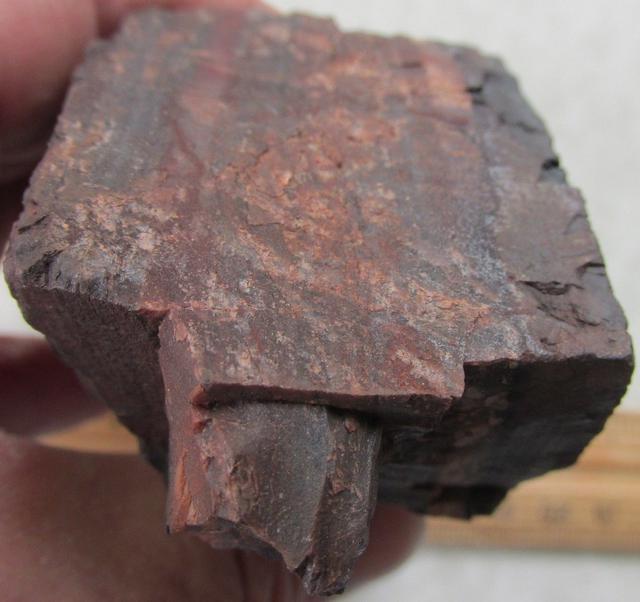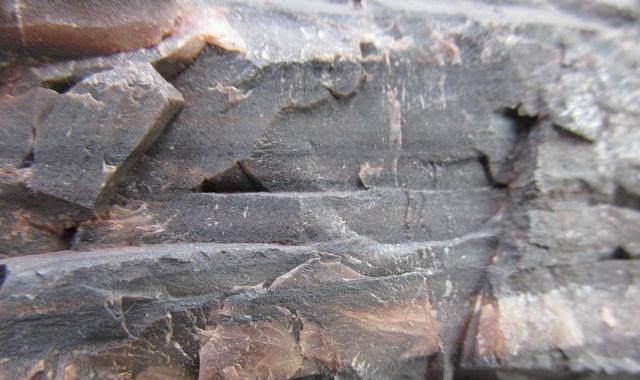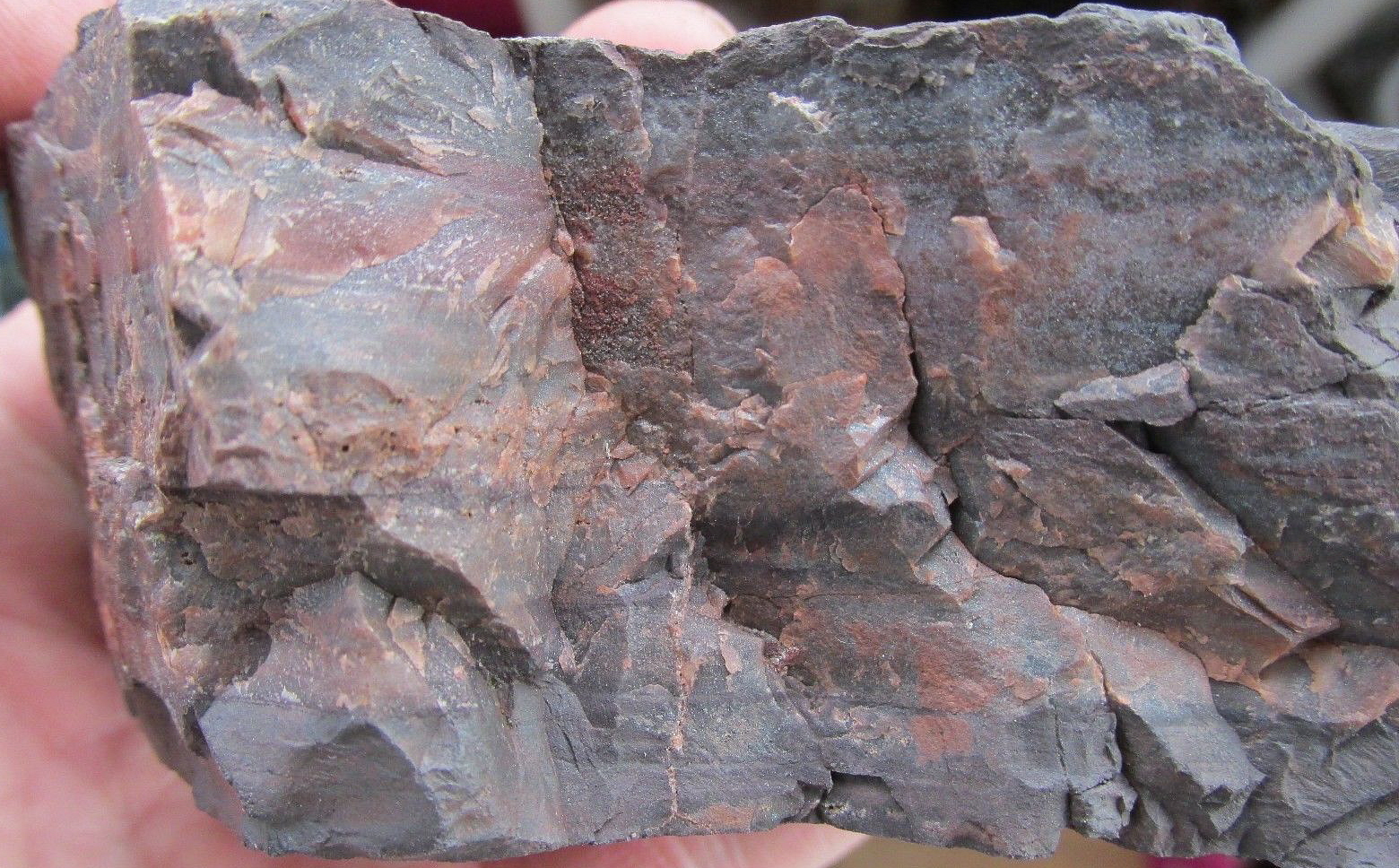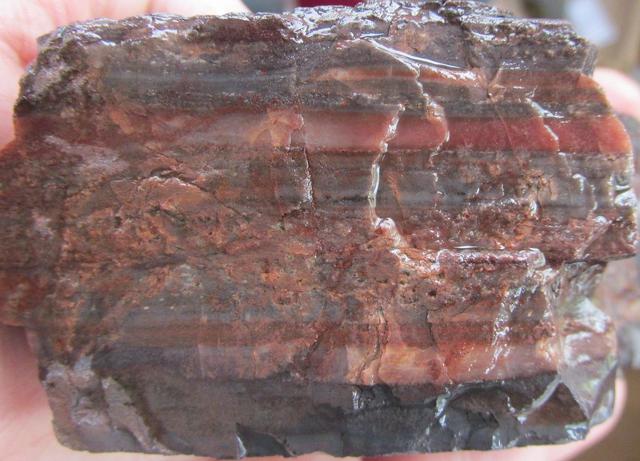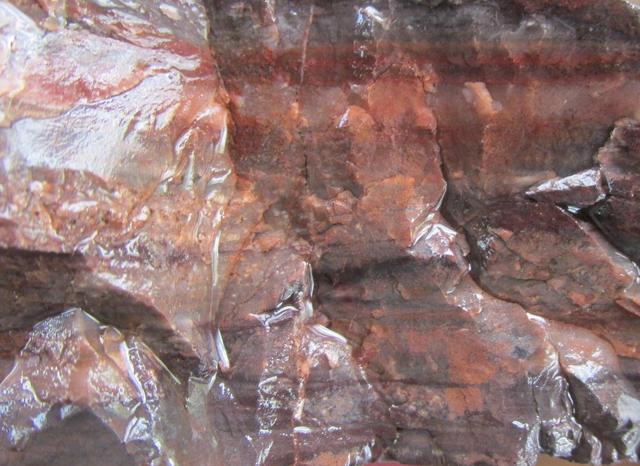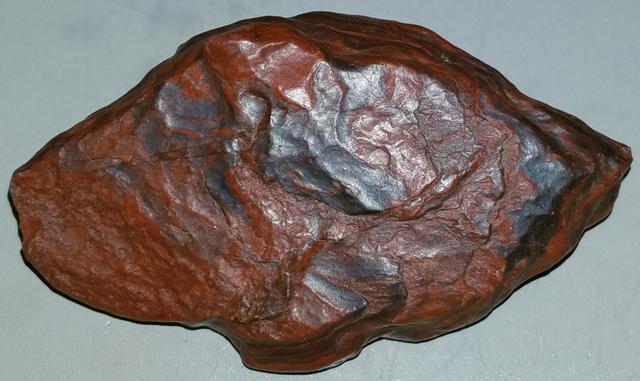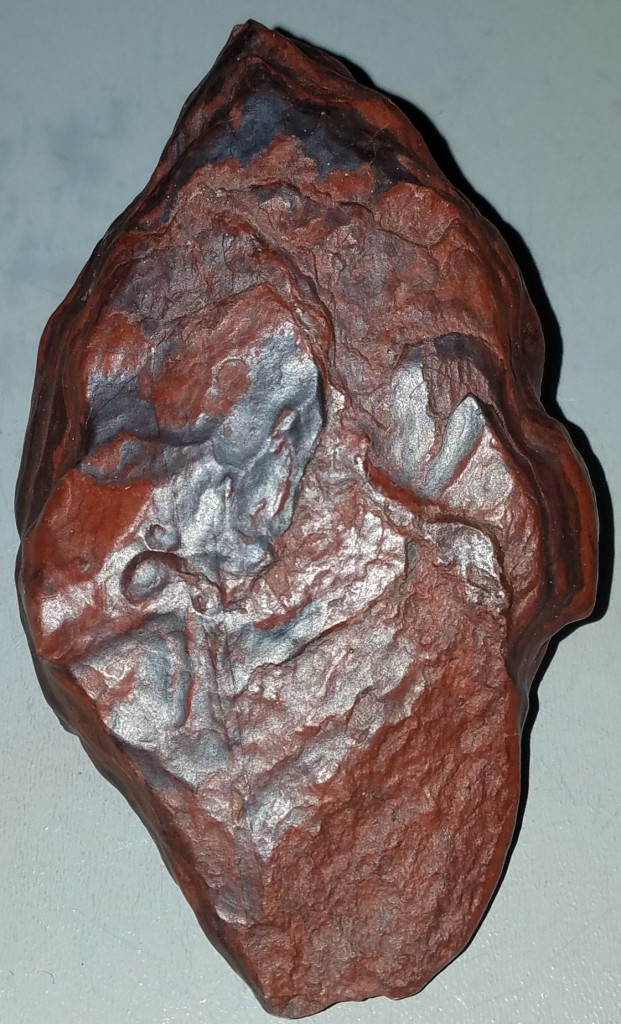Banded Iron Formation
Photographed by Michael P. Klimetz
Republic Mine
Republic
Marquette County
MICHIGAN
Photographed by Michael P. Klimetz
Republic Mine
Republic
Marquette County
MICHIGAN
Photographed by Michael P. Klimetz
Republic Mine
Republic
Marquette County
MICHIGAN
Banded iron formations (also known as banded ironstone formations or BIFs) are distinctive units of sedimentary rock that are almost always of Precambrian age. A typical BIF consists of repeated, thin layers of iron oxides, either magnetite (Fe3O4) or hematite (Fe2O3), alternating with bands of iron-poor shale and chert. Some of the oldest known rock formations, formed over 3,700 million years ago, include banded iron layers. Banded layers rich in iron were a common feature in sediments for much of the Earth's early history. The formations are abundant around the time of the great oxygenation event, 2,400 mybp, and become less common after 1,800 mybp. The reappearance of BIF conditions at 1,900 million years ago, and in association with global glaciation 750 million years ago, is problematic. Banded iron beds are an important commercial source of iron ore, such as those of the Pilbara region of Western Australia and the Animikie Group in Minnesota. The conventional concept is that the banded iron layers were formed in sea water as the result of oxygen released by photosynthetic cyanobacteria (blue-green algae), combining with dissolved iron in Earth's oceans to form insoluble iron oxides, which precipitated out, forming a thin layer on the substrate, which may have been anoxic mud (forming shale and chert). Each band is similar to a varve, to the extent that the banding is assumed to result from cyclic variations in available oxygen. It is unclear whether these banded ironstone formations were seasonal, followed some feedback oscillation in the ocean's complex system or followed some other cycle. It is assumed that initially the Earth began with vast amounts of iron dissolved in its acidic seas. Eventually, as photosynthetic organisms generated oxygen, the available iron in the Earth's oceans was precipitated out as iron oxides. When the oceans became sufficiently and permanently oxygenated, small variations in oxygen production created pulses of free oxygen in surface waters, alternating with pulses of iron oxide deposition.
Photographed by Michael P. Klimetz
Blueberry Mine
Diorite
Marquette County
MICHIGAN
Photographed by Michael P. Klimetz
Blueberry Mine
Diorite
Marquette County
MICHIGAN
Photographed by Michael P. Klimetz
Blueberry Mine
Diorite
Marquette County
MICHIGAN
Photographed by Michael P. Klimetz
Blueberry Mine
Diorite
Marquette County
MICHIGAN
Photographed by Michael P. Klimetz
Blueberry Mine
Diorite
Marquette County
MICHIGAN
Photographed by Michael P. Klimetz
Blueberry Mine
Diorite
Marquette County
MICHIGAN
Photographed by Michael P. Klimetz
Blueberry Mine
Diorite
Marquette County
MICHIGAN
Photographed by Michael P. Klimetz
Blueberry Mine
Diorite
Marquette County
MICHIGAN
Photographed by Michael P. Klimetz
Blueberry Mine
Diorite
Marquette County
MICHIGAN
Photographed by Michael P. Klimetz
Blueberry Mine
Diorite
Marquette County
MICHIGAN
Photographed by Michael P. Klimetz
Wyoming Mine
St. Louis County
MINNESOTA
Photographed by Michael P. Klimetz
Wyoming Mine
St. Louis County
MINNESOTA
Photographed by Michael P. Klimetz
Wyoming Mine
St. Louis County
MINNESOTA
